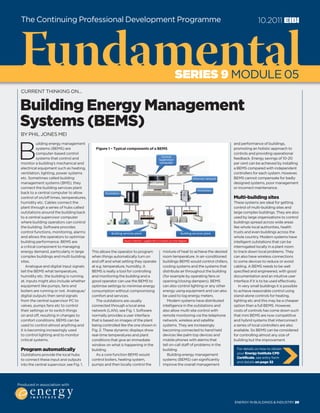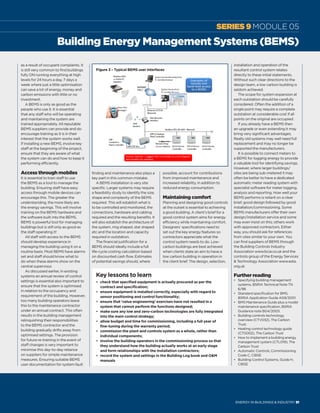Building energy management systems (BEMS) can significantly improve energy management of buildings through centralized monitoring and control of equipment like heating, cooling, lighting and power systems. BEMS connect equipment via a local area network to a central computer and software interface where operators can control settings and optimize performance. Regular maintenance and adjustment of BEMS settings is important to realize energy savings potential over time as building usage changes. Proper training of operators is also key to ensure effective use of the system.



